As we move into the warmer months of 2025 and UK weather breaks records for warm, sometimes worrying sunshine, the importance of creating sustainable living spaces has never been more apparent. With climate change and environmental issues at the forefront of our minds, many homeowners are seeking ways to make their homes eco-friendlier – and the kitchen, as the so-called heart of the home, is a great place to start.
With that in mind, today we’re exploring nine sustainable kitchen design trends for 2025 that will not only help you create a greener space but also add a touch of style and functionality to your home. With that in mind, here are some ideas on how you can transform your kitchen into an environmentally-conscious haven, all whilst staying on trend. Well, on trend for this year, at least…
Oak Worktops
Oak worktops have been a popular choice for years, and their timeless appeal continues to grow as sustainability becomes a priority for homeowners. This beautiful, durable wood is sourced from responsibly managed forests, ensuring that it is an environmentally friendly option for your kitchen.
Not only does an oak kitchen worktop provide a warm, natural aesthetic, but they are also incredibly hard-wearing and long-lasting. With proper care and maintenance, an oak worktop can last for decades, making it a sustainable and cost-effective choice for your kitchen.
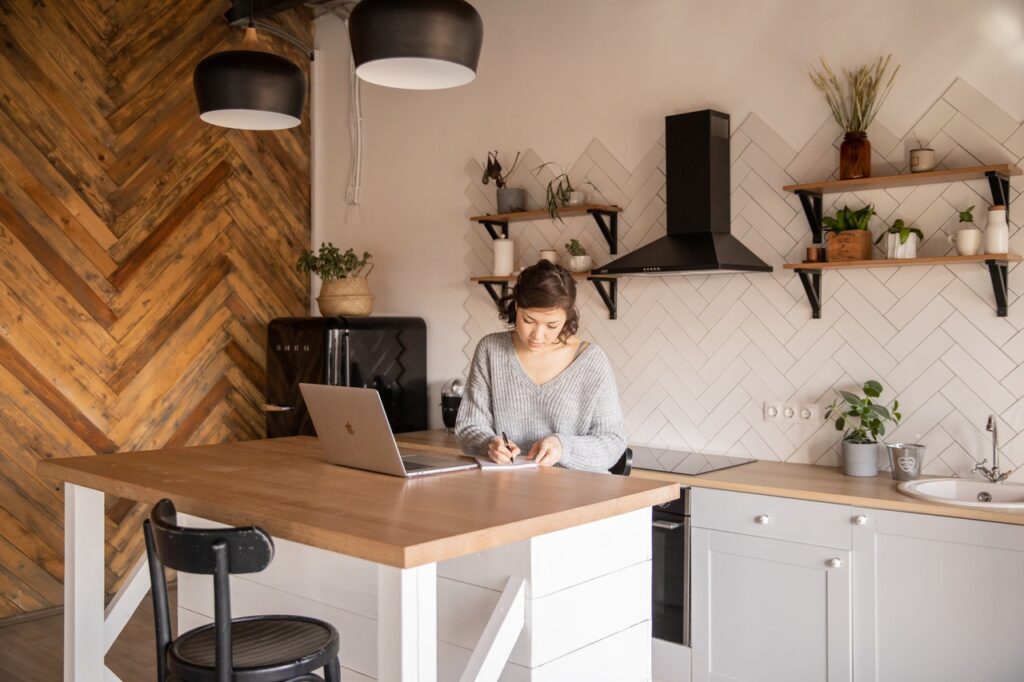
LED Lighting
LED lighting has come a long way in recent years, offering an energy-efficient and stylish alternative to traditional incandescent bulbs. By switching to LED lights in your kitchen, you can significantly reduce your energy consumption and create a more sustainable space.
LED lights also come in various styles and colours, allowing you to customise your kitchen lighting to suit your design preferences. Plus, they have a longer lifespan than traditional bulbs, meaning you’ll spend less time and money on replacements.
Read: 6 advantages of LED lights over traditional bulbs
Energy-Efficient Appliances
Upgrading your energy-sucking kitchen appliances to more efficient models is a simple way to reduce your carbon footprint and save money on your energy bills. Look for appliances with an Energy Star rating, which signifies that they meet strict energy efficiency guidelines set by the government.
From refrigerators and dishwashers to ovens and cooktops, all the way to smaller items like slow cookers and blenders, there is a wide range of energy-efficient appliances available that can help you create a more sustainable kitchen without sacrificing performance or style.
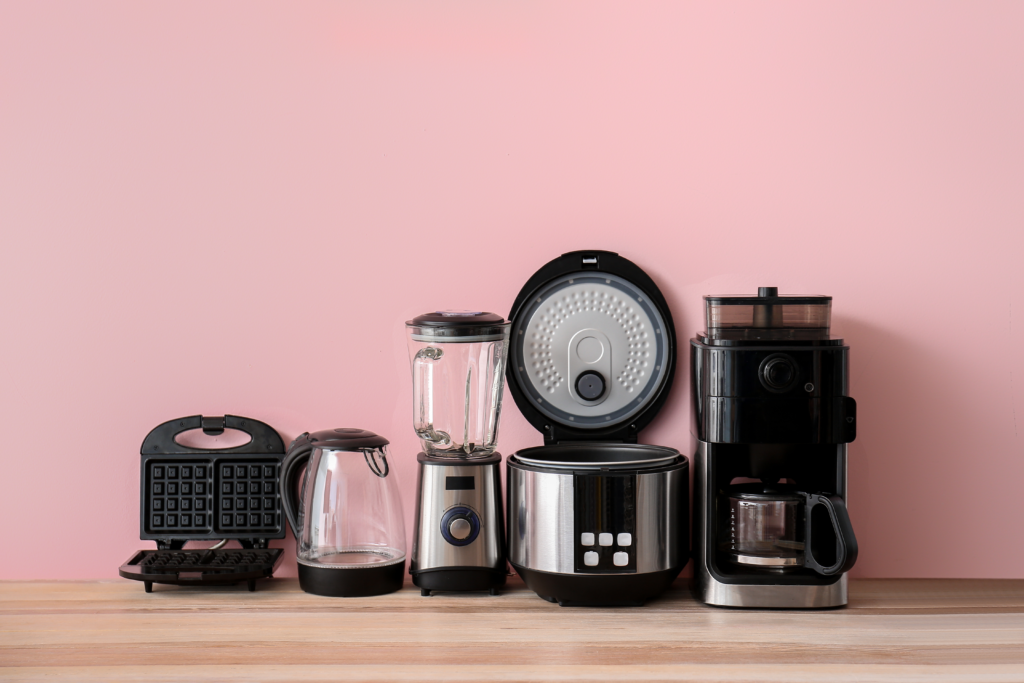
Recycled Materials
Incorporating recycled materials into your kitchen design is an excellent way to promote sustainability and reduce waste. From countertops made of recycled glass or paper composite to reclaimed wood cabinets and flooring, there are plenty of options available for creating a stylish kitchen with eco-friendly design firmly at the forefront of your thinking.
Using recycled materials not only helps to conserve natural resources but can also add unique character and charm to your space. So, don’t be afraid to get creative and think outside the box when it comes to sourcing materials for your sustainable kitchen.
Water-Saving Fixtures
Water conservation is another crucial aspect of creating a sustainable kitchen. By installing water-saving fixtures such as low-flow faucets and aerators, you can significantly reduce your water usage without compromising on functionality.
You might also consider investing in a smart water system that can monitor your water consumption and provide real-time feedback, helping you make informed decisions about your water usage and identify areas where you can save even more.
Modern Eco-Friendly AGAs
The iconic AGA cooker has undergone a sustainable transformation for 2025, combining its classic charm with modern eco-conscious technology. Traditional AGAs were known for their constant heat and high energy consumption, but today’s models offer programmable, energy-efficient alternatives that align perfectly with sustainable kitchen design.
The new generation electric AGA oven features smart technology that allows for individual control of each cooking zone, meaning you only use energy where and when you need it. Some models now come with innovative heat storage capabilities, capturing excess heat during cooking and slowly releasing it to warm your kitchen space, reducing the need for additional heating.
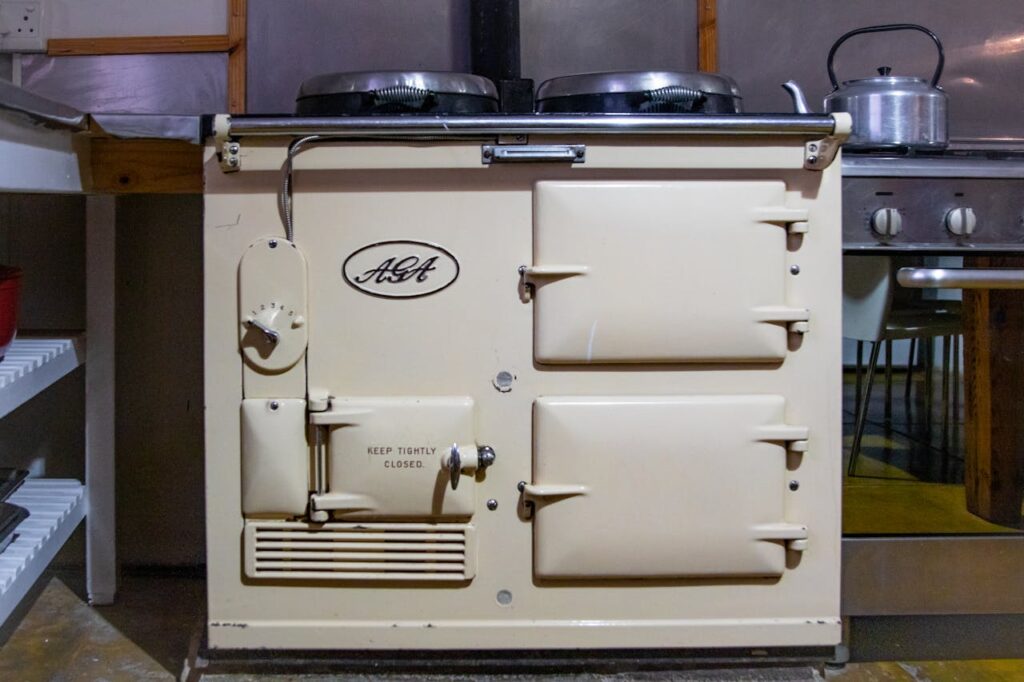
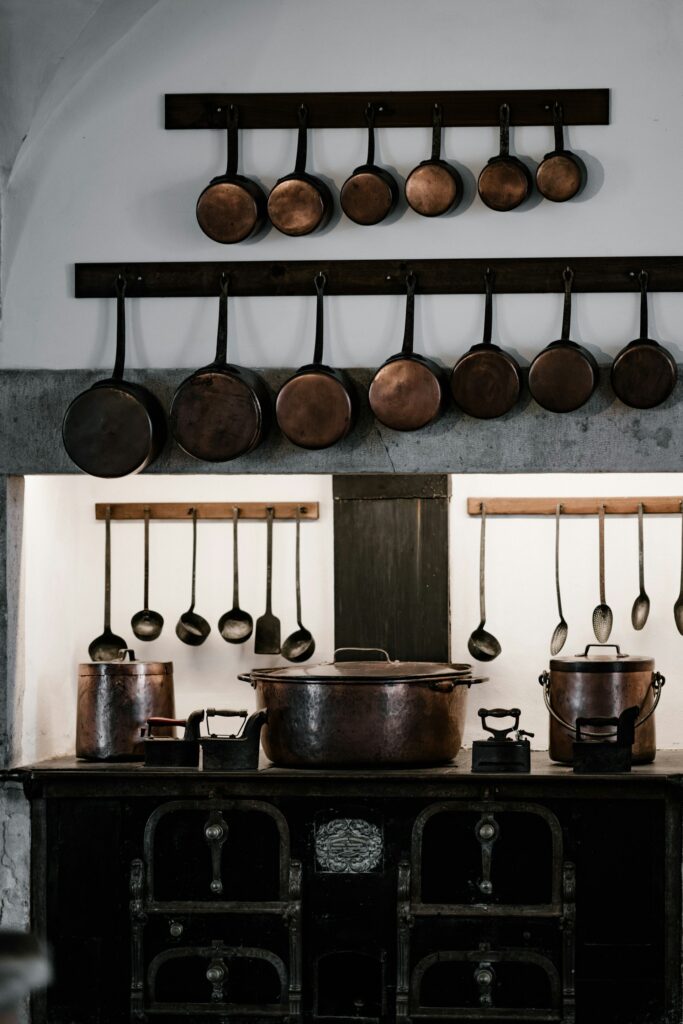
Manufacturers are also embracing renewable materials in AGA production, with cast iron components often containing recycled materials. For the truly eco-conscious homeowner, there are even models designed to integrate with home solar panel systems, allowing you to power your AGA using renewable energy.
The enduring appeal of an AGA lies not just in its timeless aesthetic but also in its longevity – these appliances are built to last for decades, making them a sustainable choice that reduces the cycle of appliance replacement. With proper maintenance, a modern eco-friendly AGA represents both a nod to traditional craftsmanship and a commitment to forward-thinking sustainability.
Indoor Herb Garden
Adding an indoor herb garden to your kitchen is not only a visually appealing design feature but also a practical way to reduce your environmental impact. Growing your own herbs means fewer trips to the store, reducing your carbon footprint and cutting down on plastic packaging.
Plus, having fresh herbs at your fingertips makes cooking more enjoyable and encourages you to experiment with new flavours and recipes. So, why not try your hand at growing basil, parsley, or mint and add a touch of greenery to your sustainable kitchen?
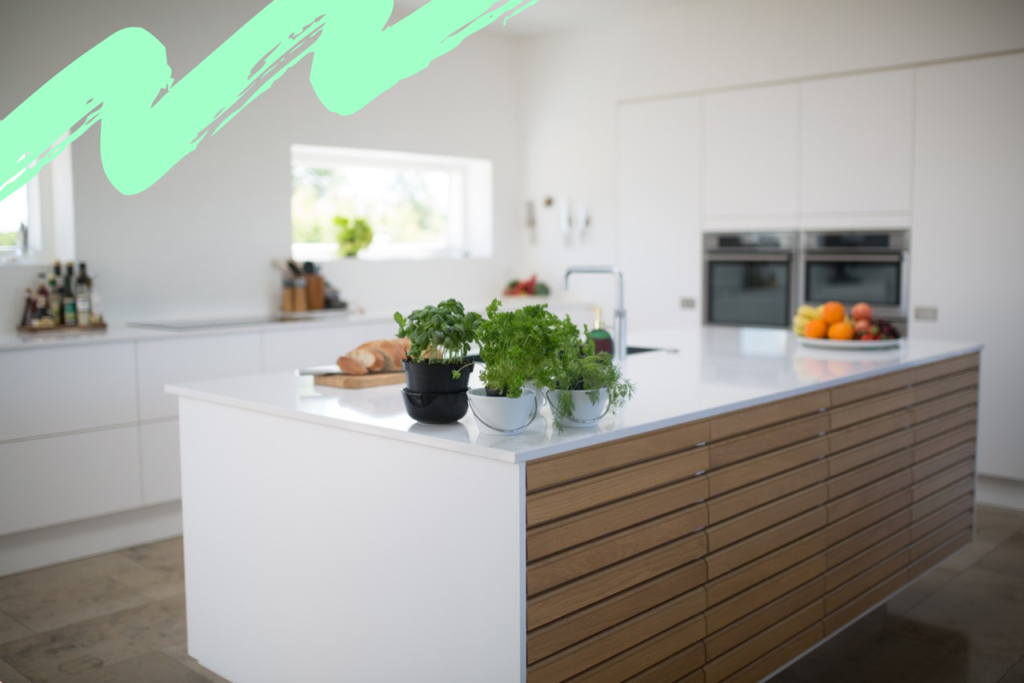
Smart Kitchen Technology
Smart technology has become increasingly popular in recent years, and it’s easy to see why. From smart fridges that can track your food inventory and expiration dates to voice-activated assistants that can help you find recipes and create shopping lists, there are plenty of ways that smart technology can make your kitchen more sustainable and efficient.
By streamlining your cooking process and reducing food waste, smart kitchen technology can help you create a greener, more eco-friendly space.
Natural & Sustainable Flooring
When it comes to choosing flooring for your sustainable kitchen, opt for natural and sustainable materials such as cork, bamboo, or reclaimed wood. These materials not only have a lower environmental impact but also offer a warm, inviting aesthetic that complements any kitchen design.
Cork and bamboo are particularly eco-friendly options, as they are rapidly renewable resources that can be harvested without causing significant damage to the environment. Plus, they are naturally resistant to moisture and mould, making them ideal for use in the kitchen.
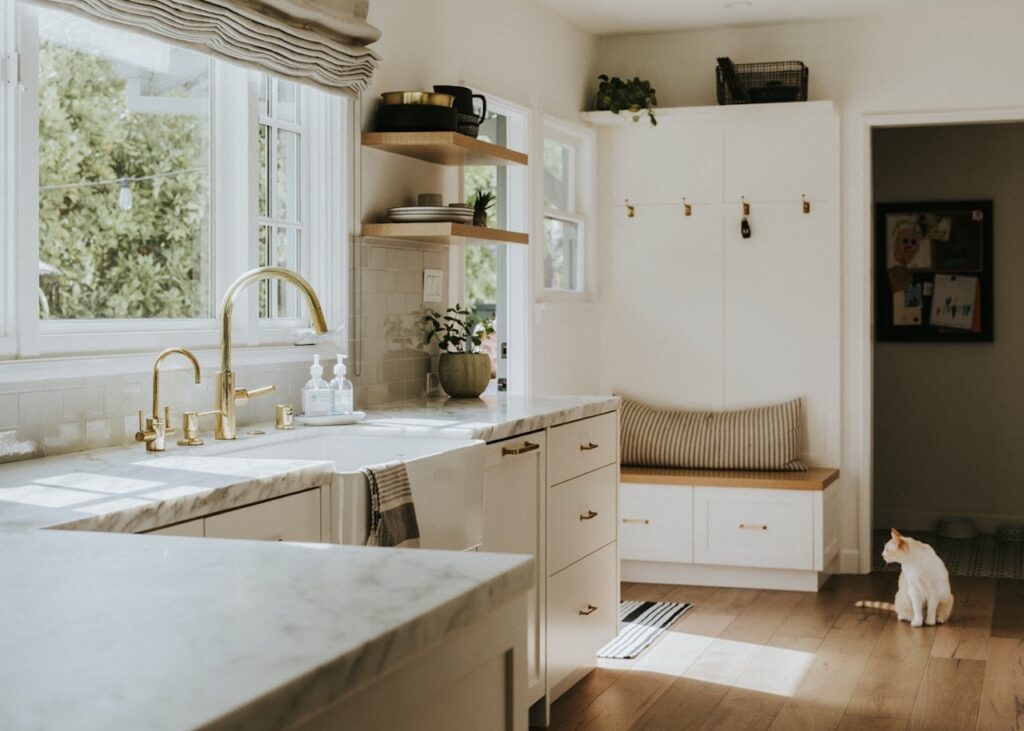
Solar-Powered Ventilation
Proper ventilation is essential in any kitchen, but traditional exhaust fans can consume a lot of energy. By installing a solar-powered ventilation system, you can reduce your energy consumption and promote a healthier indoor environment.
Solar-powered ventilation systems harness the sun’s energy to power fans and other components, making them an eco-friendly and cost-effective solution for maintaining good air quality in your kitchen.
The Bottom Line
Creating a sustainable kitchen doesn’t have to be complicated or expensive. By incorporating these nine design trends into your space, you can make a positive impact on the environment while also enjoying a stylish, functional, and eco-friendly kitchen. So, go ahead and embrace sustainability in 2025 – your kitchen (and the planet) will thank you!





